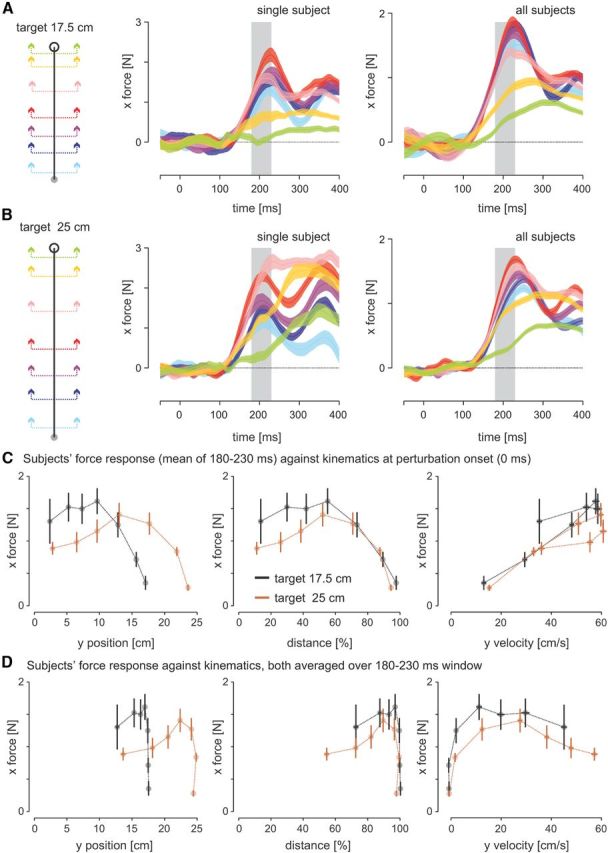Figure 2.

Time course of visuomotor gain. A, Left: Subjects made forward-reaching movements to the near target (17.5 cm), whereas on random trials, the visual location of the hand was perturbed either left or right at one of seven locations during movement. Middle: Different colors correspond to the different perturbation onset locations during reaching. Lateral forces exerted on the force channel in response to perturbations of the visual location of the hand during movement to a “near” target for a single subject. Responses to left and right perturbations are combined for each perturbation location with appropriate sign so that corrective forces are positive. Zero time indicates the onset of the visual perturbation and the gray background represents the reflex time window for force. Right: Mean lateral forces exerted on the channel across all subjects. B, Lateral force responses to cursor perturbations when reaching to a “far” (25 cm) target. C, Magnitude of lateral forces over the involuntary time window in A and B averaged across subjects separately for movements to the near (black trace) and far (brown trace) target. In the left panel, magnitudes are plotted as a function of absolute position from the start point; in the middle panel, the magnitudes are plotted as a function of percentage distance to the target; and in the right panel, the magnitudes are plotted as a function of the forward velocity, where each of these measures is determined at the time of perturbation onset. The error bars (both vertical and horizontal) represent the SEM. During reaching to either target, the visuomotor reflex gain was highest during the middle of movement and then decreased sharply as the hand neared the target. Higher initial gains were observed when reaching to the near target compared with the far target. D, The magnitude of lateral forces over the involuntary time window in A and B for movements to the near (black trace) and far (brown trace) target plotted as a function of the mean absolute position from the start point, percentage of distance to the target, and forward velocity over the same involuntary time window (180–230 ms).
